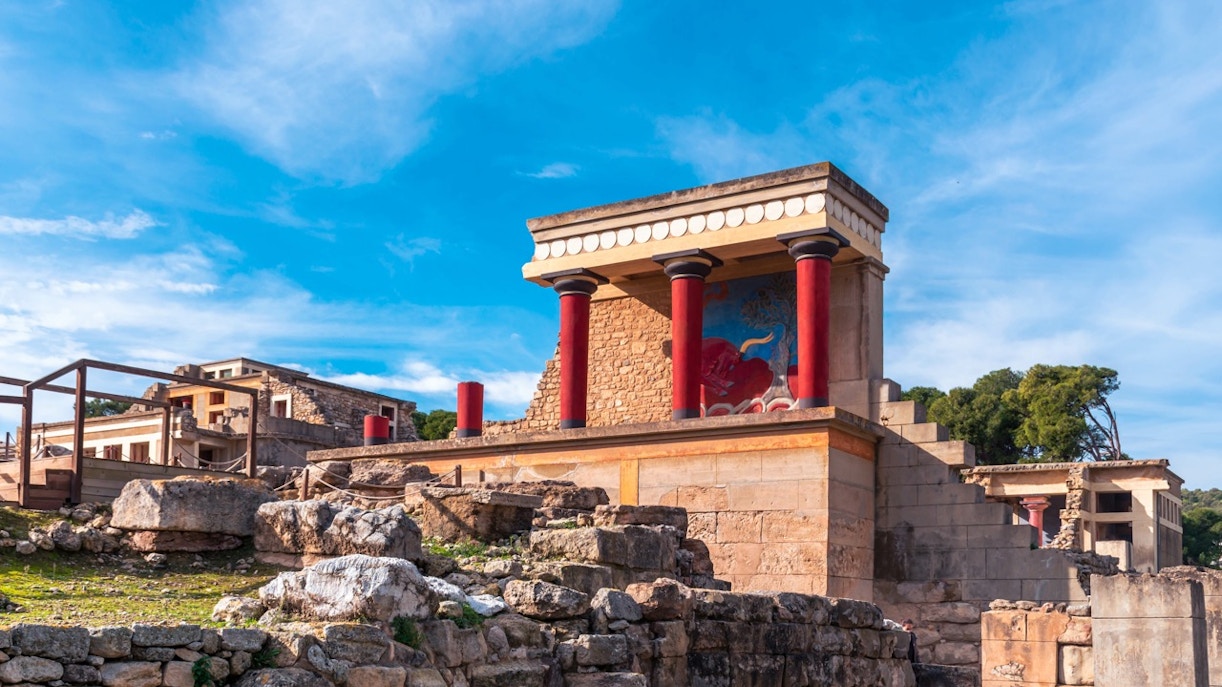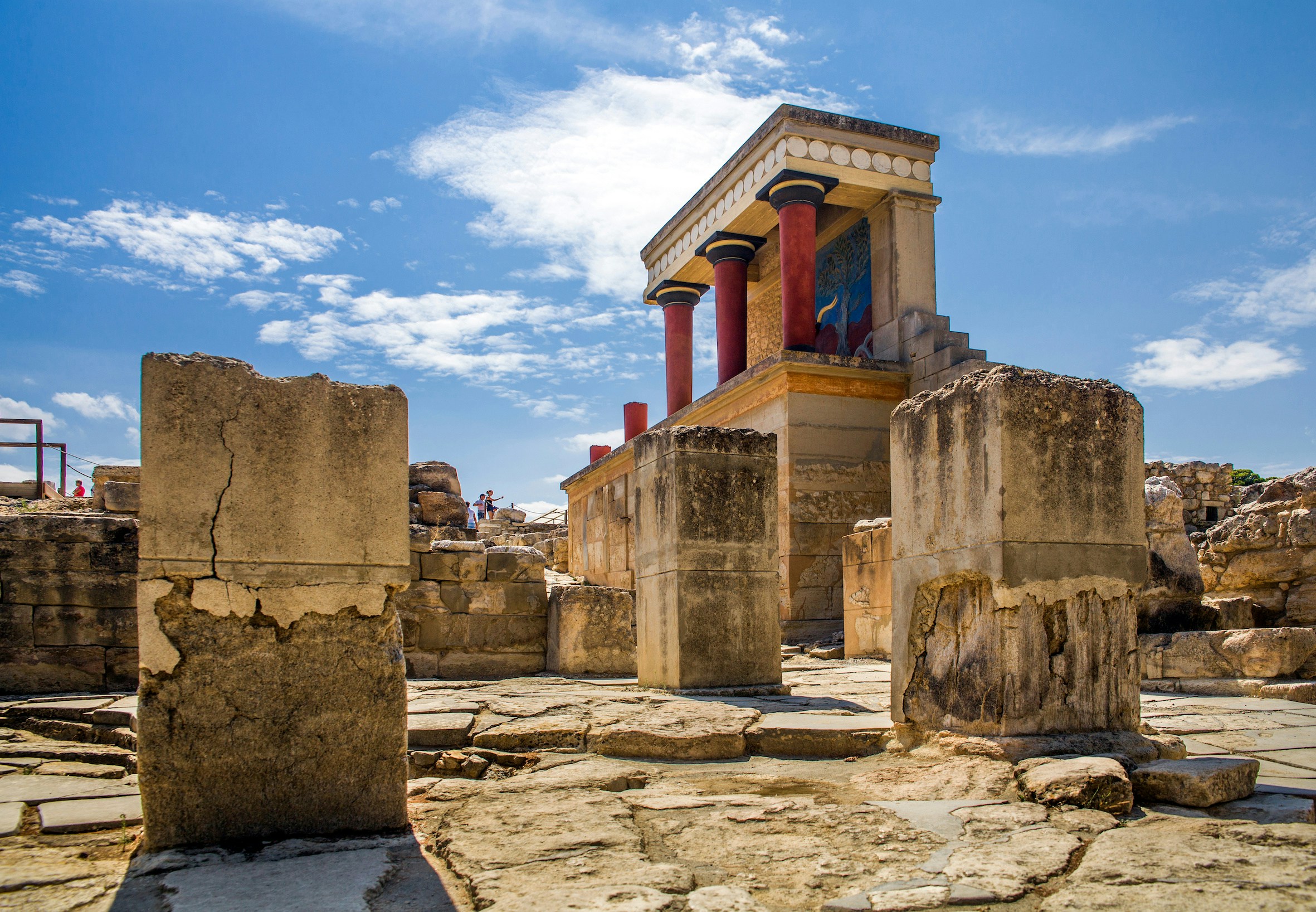Throne Rooms of the Minoan world
Unlike Mycenaean or Hittite throne rooms, which were typically part of megarons (large rectangular halls with a central hearth), the Knossos Throne Room is much smaller, more enclosed, and lacks an obvious space for large audiences or fire altars. The seat itself is notably low and narrow, prompting theories that the primary occupant may not have been a traditional king, but rather a priestess or the symbolic representative of a female deity.
The griffin frescoes are among its most distinctive features. While the imagery echoes Eastern influences, such as the guardian beasts found in Egyptian and Near Eastern art, their placement within a small, enclosed chamber rather than at a monumental entrance is a uniquely Minoan choice.
Where most Bronze Age throne rooms were built to showcase royal power and political dominance, the smaller, more symbolic space at Knossos points to a different kind of authority, one likely rooted in ceremonial authority rather than overt kingship.










